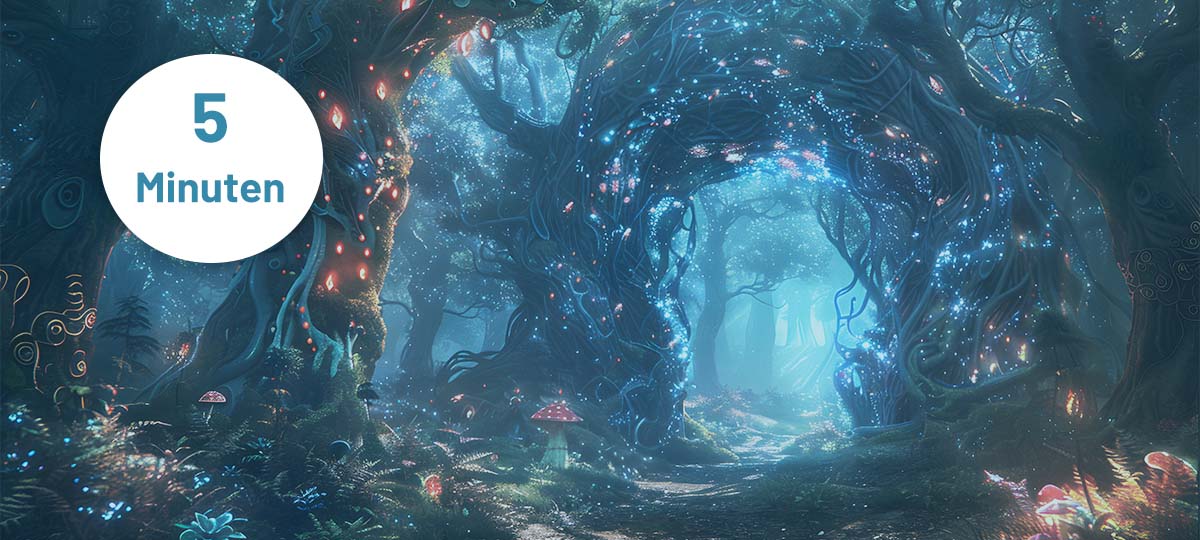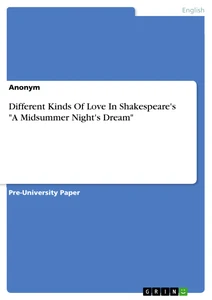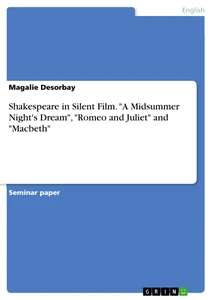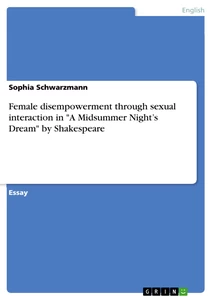First things first:
- The play was probably written in 1595/96 and first published in 1600
- It is a comedy in five acts
- It’s about the confusion between four lovers, magical pranks by fairies, and a funny play put on by craftsmen in the forest.
Summary
“A Midsummer Night’s Dream” takes place mostly in a forest near ancient Athens, where the fairy king Oberon and his queen Titania are in the middle of a fight. At the same time, two pairs of lovers from Athens get lost in the woods and get caught up in one of Oberon’s tricks meant for Titania. The result is total chaos among the lovers, but everything is set right with magic by the morning.
Main characters
Titania
Titania, the fairy queen, lives in a magical forest near Athens with her husband Oberon and a bunch of other fairies. She’s fighting with Oberon over a child she’s adopted and refuses to give up. During the night, thanks to Oberon’s magic, she falls in love with a craftsman who’s been turned into a donkey. The spell wears off by morning, and the couple makes up.
Oberon
Oberon, the fairy king, wants to prank Titania after their fight, so he sends his servant Puck to fetch a magic flower for a love spell. When he hears about the human lovers’ troubles, he decides to use the same spell to help them out, too.
Puck
Puck is Oberon’s mischievous servant who causes chaos while following his master’s orders. He mixes up the human lovers, leading to plenty of confusion, and also turns a craftsman into a donkey, whom Titania then falls in love with under the spell.
Hermia
The Athenian woman Hermia is supposed to marry Demetrius (her dad’s choice), but she loves Lysander. She defies her father and runs away with Lysander into the forest, where they become victims of Puck’s magical meddling. For a time, Lysander falls in love with Helena, and Hermia ends up fighting with her best friend.
Lysander
With his love for Hermia, Lysander not only opposes the Athenian law, but also comes into conflict with Hermia’s father and Demetrius, who is intended for her. Their love survives the confusion and magic of the forest, and they end up together in the end.
Helena
Helena, Hermia’s best friend, is desperately in love with Demetrius and follows him into the forest. Thanks to Puck’s messed-up love spell, she experiences an emotional rollercoaster but eventually wins Demetrius’ love.
Demetrius
Demetrius originally loves Hermia and insists on marrying her, but when she runs away with Lysander, he chases them into the forest. There, under Puck’s spell, he falls in love with Helena, and by the end of the play, he realizes she’s his true love.
Themes and interpretations
Mirroring reality
René Girard and his mimetic theory: René Girard’s mimetic theory helps us understand “A Midsummer Night’s Dream.” Girard suggested that Shakespeare understood the mechanisms of imitation (mimesis) better than even the greatest philosophers like Plato or Aristotle. In particular, the accusation constantly levelled against Shakespeare in Elizabethan England that the playwright builds his tragic conflicts around trivialities underlines Girard’s thesis.
Contrasting worlds
Contrasting worlds in Shakespeare’s “Midsummer Night’s Dream”: The play highlights the contrast between the rational, ordered world of Athens and the emotional, natural world of the magical forest. These two settings reflect the tension between order and chaos.
Magic and power
The influence of magic in “A Midsummer Night’s Dream” compared with Kleist’s “Amphitryon”: The magical world of the fairies is a fantastical contrast to the more grounded human world. The crossover between these two realms, especially through the actions of Oberon and Puck, shows how magic affects both worlds.
The ruling couples
The ruling couples in Shakespeare’s ‘A Midsummer Nights Dream’: Oberon and Titania rule the magical forest, while Theseus and Hippolyta are the rulers of Athens. Though the two couples seem quite different, with one being more emotional and the other rational, they’re actually quite similar and connected.
Metamorphosis
The motif of metamorphosis in “A Midsummer Night’s Dream”: Transformation is a key theme. It’s not just about a craftsman turning into a donkey—characters change emotionally, and the entire play is full of shifting identities and roles.
More recommendations:
Good to know:
- The play contrasts two worlds that mirror the reality of Shakespeare’s time.
- It can be analyzed from multiple angles (mythology, folklore, and more).
- The drama is strongly influenced by Greek mythology and English fairy tales.
Sources:
- Shakespeare, William: A Midsummer Night’s Dream. Reclam, Stuttgart 1986.
Do you like our magazine? Then sign up for our GRIN newsletter now!










